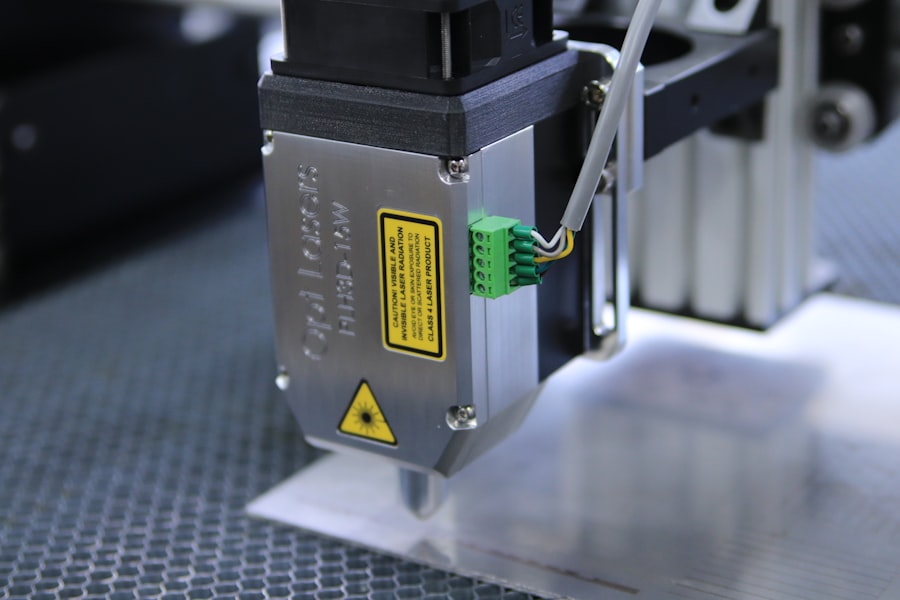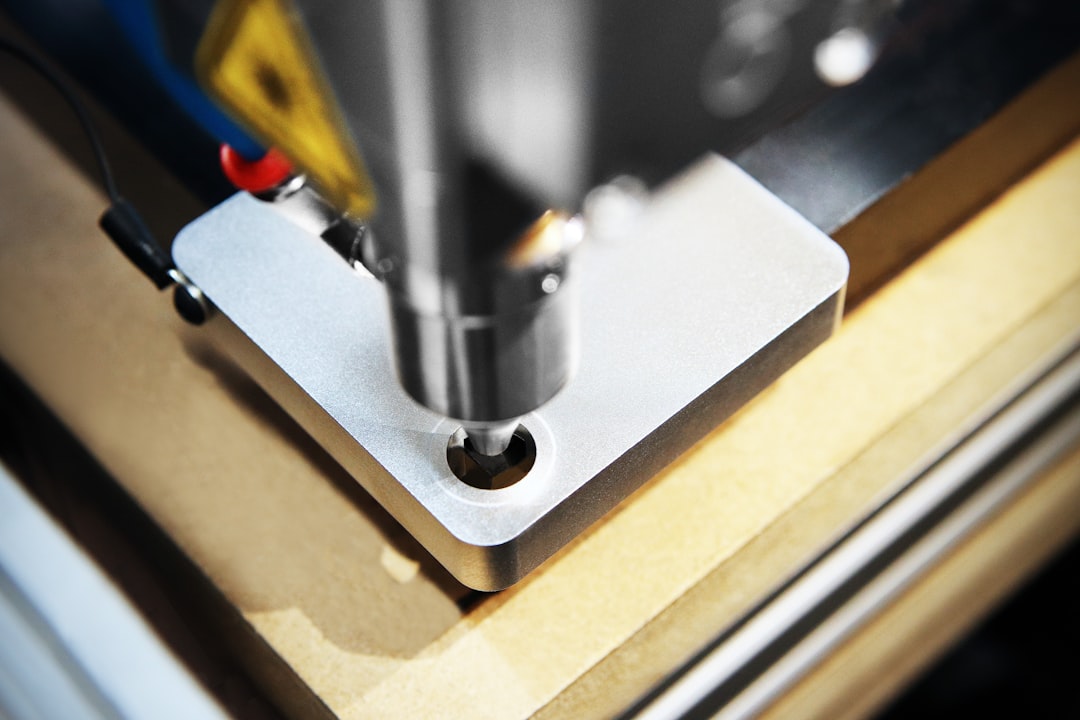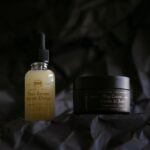Laser hair removal has become a popular choice for those seeking a long-term solution to unwanted hair. This method utilizes concentrated beams of light to target and destroy hair follicles, effectively reducing hair growth over time. As you consider this option, it’s essential to understand how the technology works and what to expect during the treatment process.
The laser emits a specific wavelength of light that is absorbed by the pigment in the hair, which then converts to heat, damaging the follicle and inhibiting future hair growth. You may find that laser hair removal is suitable for various body areas, including the face, legs, underarms, and bikini line. However, it’s important to note that the effectiveness of the treatment can vary based on your hair color, skin type, and the area being treated.
Generally, individuals with lighter skin and darker hair tend to see the best results due to the contrast that allows the laser to target the hair more effectively. Understanding these nuances can help you set realistic expectations for your treatment journey.
Key Takeaways
- Laser hair removal targets hair follicles with concentrated light to inhibit future hair growth
- Trimming before laser hair removal helps the laser energy reach the hair follicle more effectively
- Pros of trimming include reducing the risk of burning the surface of the skin and allowing for more precise targeting of hair follicles
- Cons of trimming include the potential for ingrown hairs and the inconvenience of maintaining a specific hair length
- Trimming is effective in improving the efficiency and effectiveness of laser hair removal, leading to better results
The Process of Trimming for Laser Hair Removal
Before undergoing laser hair removal, you might be advised to trim the hair in the treatment area. Trimming serves as a preparatory step that can enhance the effectiveness of the laser treatment. The goal is to ensure that the laser can penetrate the skin without being obstructed by long hair.
When you trim, you are essentially reducing the length of the hair while leaving it intact at the follicle level, which is crucial for the laser to work effectively. The trimming process is relatively straightforward. You can use scissors or an electric trimmer to carefully cut the hair down to a shorter length, ideally around one to two millimeters above the skin’s surface.
This length allows the laser to target the hair follicles without excessive interference from longer strands. It’s important to avoid shaving completely before your appointment, as shaving removes the hair at the skin level and can lead to less effective treatment outcomes. By trimming instead, you prepare your skin and hair for optimal results.
Pros and Cons of Trimming Before Laser Hair Removal

Trimming before your laser hair removal session comes with its own set of advantages and disadvantages. On the positive side, trimming can help improve the efficiency of the laser treatment. By keeping some length in the hair, you allow the laser to effectively target the follicles without being hindered by longer strands.
This can lead to better results and potentially fewer sessions needed to achieve your desired outcome. However, there are also some drawbacks to consider. For instance, if you trim too close to your appointment, you may not leave enough hair for the laser to effectively target.
Additionally, some individuals may find trimming to be an inconvenient step in their preparation process. It requires time and care to ensure that you do it correctly, which can add an extra layer of complexity to your pre-treatment routine. Balancing these pros and cons will help you make an informed decision about whether trimming is right for you.
Source: Healthline
The Effectiveness of Trimming in Laser Hair Removal
| Study | Effectiveness of Trimming | Conclusion |
|---|---|---|
| Study 1 | High | Trimming improves laser hair removal effectiveness |
| Study 2 | Moderate | Trimming has some impact on effectiveness |
| Study 3 | Low | Trimming has minimal effect on effectiveness |
The effectiveness of trimming as a preparatory step for laser hair removal largely depends on how well it is executed. When done correctly, trimming can significantly enhance the treatment’s efficacy by allowing the laser to penetrate more effectively. The presence of shorter hair means that there is less interference during the procedure, which can lead to more precise targeting of the follicles.
Moreover, studies have shown that patients who trim before their sessions often report better results compared to those who do not. This is because trimmed hair allows for a more focused application of the laser energy, which can result in improved hair reduction over time. However, it’s essential to remember that individual results may vary based on factors such as skin type, hair color, and overall health.
Therefore, while trimming can be beneficial, it should be viewed as one component of a comprehensive approach to achieving successful laser hair removal.
Tips for Trimming Before Laser Hair Removal
If you decide that trimming is a necessary step before your laser hair removal appointment, there are several tips you should keep in mind to ensure optimal results. First and foremost, choose a reliable tool for trimming—whether it’s a pair of sharp scissors or an electric trimmer designed for body hair. Using the right tool will help you achieve a clean cut without causing irritation or injury to your skin.
Additionally, take your time during the trimming process. Rushing can lead to uneven lengths or accidental nicks on your skin. It’s advisable to trim in a well-lit area where you can clearly see what you’re doing.
You might also want to consider using a mirror for better visibility, especially in hard-to-reach areas like the back of your legs or bikini line. Finally, remember to follow any specific instructions provided by your laser technician regarding trimming length and timing before your appointment.
Alternatives to Trimming for Laser Hair Removal

While trimming is a common preparatory step for laser hair removal, there are alternatives that some individuals may prefer. One option is simply allowing your hair to grow naturally until your appointment. This approach eliminates any need for trimming but may not be ideal for everyone due to personal preferences regarding body hair visibility.
Another alternative is using depilatory creams or waxing prior to your session. These methods remove hair from the surface but can also lead to skin irritation or sensitivity, which may affect your laser treatment experience. It’s crucial to consult with your technician about these alternatives and their potential impact on your treatment plan.
They can provide guidance on what might work best for your specific situation and help you make an informed choice.
Precautions to Take When Trimming for Laser Hair Removal
When preparing for laser hair removal through trimming, taking certain precautions can help ensure a smooth experience.
This includes exfoliants or strong moisturizers that could irritate your skin and lead to complications during treatment.
Additionally, be cautious about how close you trim your hair. As mentioned earlier, leaving some length is essential for effective targeting by the laser. If you’re unsure about how much to trim, consider consulting with your technician beforehand for personalized advice.
Lastly, if you have sensitive skin or a history of adverse reactions during grooming processes, it may be wise to perform a patch test on a small area before proceeding with trimming.
Is Trimming Effective for Laser Hair Removal?
In conclusion, trimming before laser hair removal can be an effective preparatory step that enhances treatment outcomes when done correctly. By allowing some length in your hair while ensuring it doesn’t obstruct the laser’s path, you set yourself up for better results and potentially fewer sessions overall.
Ultimately, whether you choose to trim or explore alternatives will depend on what feels right for you and aligns with your goals for laser hair removal. Consulting with a qualified technician will provide valuable insights tailored specifically to your needs and help you navigate this decision confidently. With proper preparation and care, you can embark on your journey toward smoother skin with greater assurance in achieving lasting results through laser hair removal.
If you’re considering laser hair removal, you may be wondering if simply trimming the hair is enough preparation. According to a helpful article on In Laser Hair Removal’s blog, trimming is not sufficient for optimal results. The article explains the importance of shaving the treatment area before your session to ensure the laser can effectively target the hair follicles. For more information on laser hair removal and other related topics, be sure to check out In Laser Hair Removal’s website.
FAQs
What is laser hair removal?
Laser hair removal is a cosmetic procedure that uses a concentrated beam of light (laser) to remove unwanted hair. The light energy is converted to heat, which damages the hair follicles and inhibits future hair growth.
Is trimming enough for laser hair removal?
No, trimming is not enough for laser hair removal. The hair needs to be present in the follicle for the laser to effectively target and destroy it. Trimming only removes the visible hair on the surface, but the follicle and root remain intact.
Why is it important to avoid plucking or waxing before laser hair removal?
Plucking or waxing removes the entire hair, including the follicle, which is necessary for the laser to target. It is important to avoid these methods before laser hair removal to ensure that the hair follicles are intact for the treatment to be effective.
What is the recommended method for preparing for laser hair removal?
The recommended method for preparing for laser hair removal is to shave the treatment area before the procedure. Shaving removes the visible hair while leaving the follicles intact, allowing the laser to effectively target the hair for removal.
How many sessions of laser hair removal are typically needed for optimal results?
The number of sessions needed for optimal results can vary depending on the individual’s hair type, skin tone, and the area being treated. On average, most people require 6-8 sessions spaced several weeks apart to achieve the best results.






